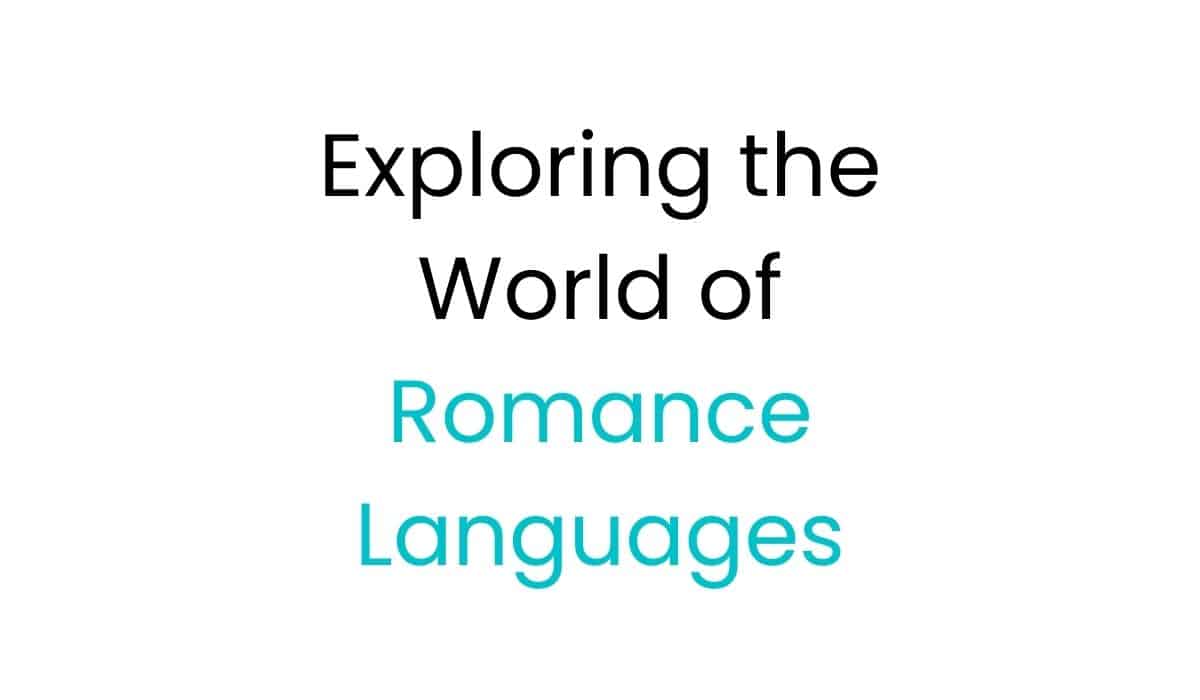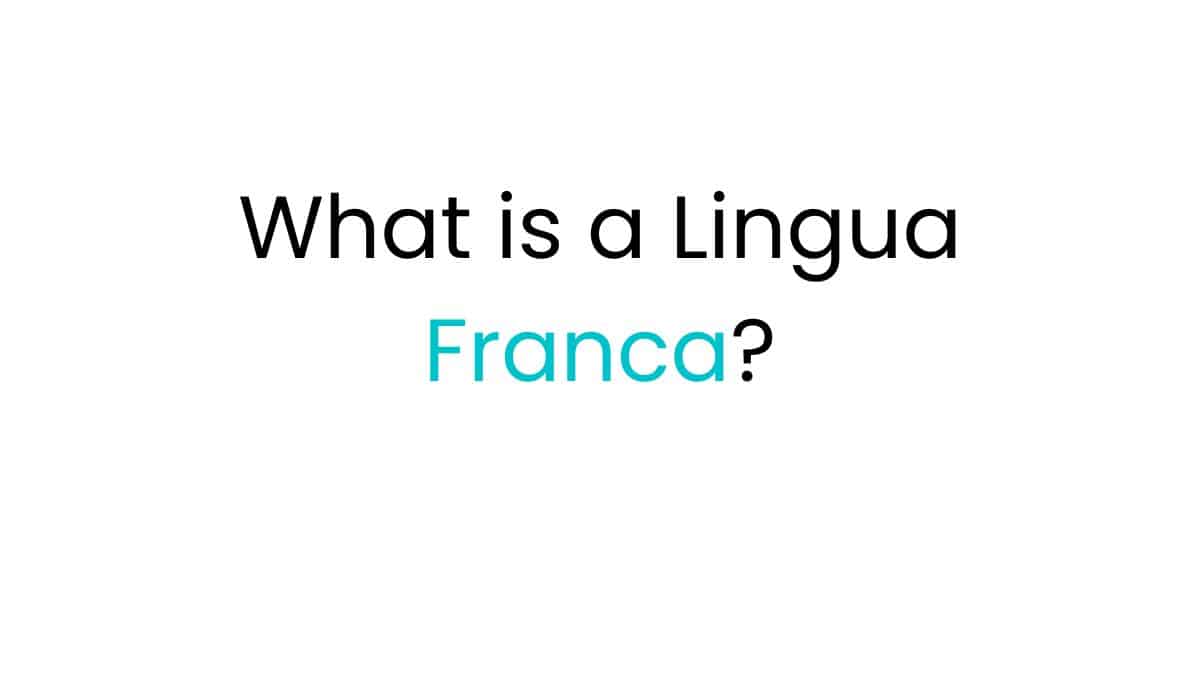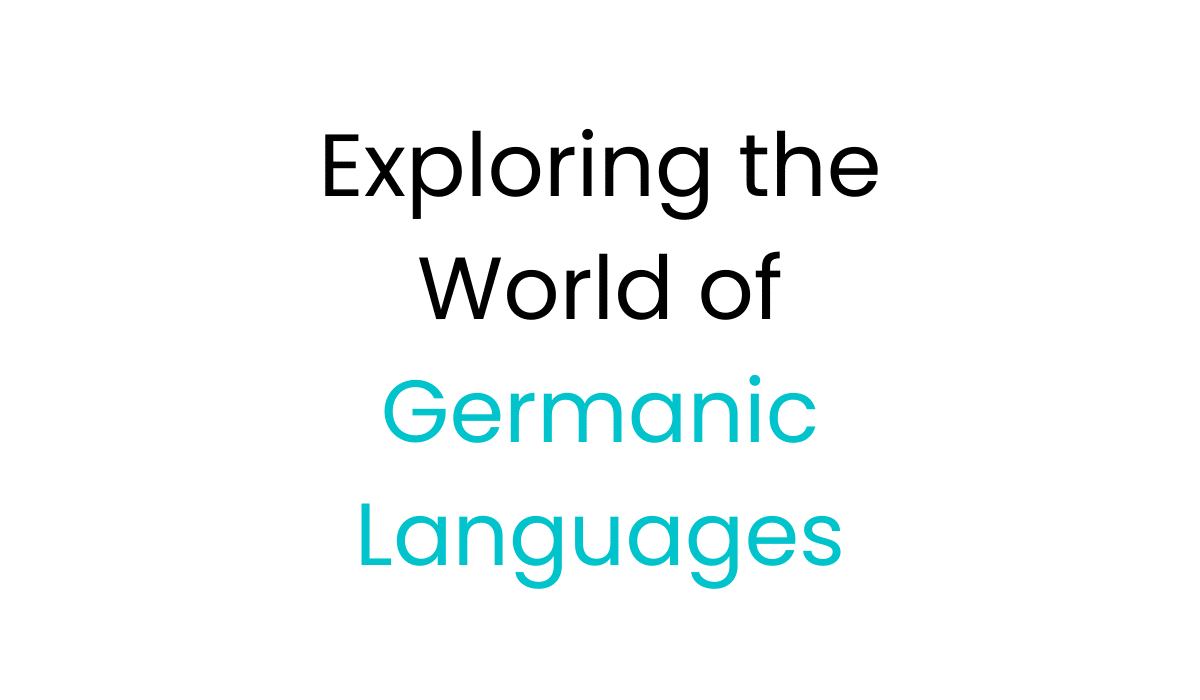Dutch is a language with a deep history and a big impact worldwide. This article will cover the Dutch language, its links to English and German, and its effects on languages globally. You’ll discover the special features of Dutch, like its alphabet, grammar, and how to say words. It also talks about the different ways Dutch is spoken in the Netherlands and Belgium. If you’re thinking of visiting the Netherlands or just want to learn more about this interesting language, this guide has all the info you need.
Key Takeaways
- Dutch is a West Germanic language with over 28 million speakers worldwide, mainly in the Netherlands and Belgium.
- The Dutch language shares many similarities with English and German, but also has distinct features such as the survival of grammatical genders.
- Dutch has influenced languages outside of Europe, including Indonesian, where about a fifth of the language can be traced to Dutch.
- The transition from Old Dutch to Middle Dutch and then Modern Dutch was a gradual process, with the Dutch standard language becoming established over time.
- Dutch has a unique alphabet and pronunciation, including diphthongs and vowel combinations that can be challenging for non-native speakers.
- Key Takeaways
- Similarities with English and German
- Dutch Influence on English
- Basic Facts About the Dutch Language
- Relation to Afrikaans
- Old Dutch
- Middle Dutch
- Modern Dutch
- Dutch Vowel Combinations
- Dutch Sentence Structure
- Genders in Dutch
- Dutch Nouns and Plurals
- Dutch Verb Conjugations
- What are the similarities between Dutch, English, and German?
- How widely is Dutch spoken and what is its global influence?
- What is the history of the Dutch language?
- What are the regional variations and dialects of the Dutch language?
- How does the Dutch language compare to English and German?
- What are the challenges in learning the Dutch language?
- Is it necessary to learn Dutch in order to live and work in the Netherlands?
- What are effective ways to practice and improve Dutch language skills?
Introduction to the Dutch Language
Dutch is a West Germanic language, closely related to English and German. It shows many similarities with these languages, especially in cognates. These are words that share a common origin. For example, “appel” (apple), “peer” (pear), and “blauw” (blue) look similar to their English versions, showing their shared roots.
Similarities with English and German
The Dutch language has greatly influenced English, adding many words to its vocabulary. Words like “cookie” from “koekje” and “Santa Claus” from “Sinterklaas” are examples. Afrikaans, a Dutch-based language, has also given English words like “apartheid” and “wildebeest.”
Dutch Influence on English
Dutch and English are similar in sentence structure and grammar. This makes it easier for English speakers to learn Dutch. They can use their knowledge of West Germanic languages to help them.
| Dutch Greetings | English Translation |
|---|---|
| Hoi | Hi |
| Hallo | Hello |
| Ik heet… | My name is… |
| Ik ben… | I am… |
| Waar kom je vandaan? | Where are you from? |
| Wat is uw beroep? | What is your profession? |
| Wat doe jij in Nederland? | What are you doing in the Netherlands? |
The Awesomeness of Dutch
The Dutch language is fascinating and dynamic, playing a big role in the Benelux region’s culture. It’s spoken by over 28 million people worldwide. Dutch is more than the Netherlands’ official language; it has a big impact globally.
Basic Facts About the Dutch Language
Dutch is a West Germanic language, closely related to Afrikaans, spoken in South Africa. While both languages are similar, they have different vocabularies and ways of speaking. It’s official in the Netherlands, Belgium, and Suriname, and also in the Caribbean.
- Dutch is the only official spoken language in the Netherlands.
- Dutch speakers can be found in countries such as Suriname, Aruba, Curaçao, and Sint Maarten, which are part of the Kingdom of the Netherlands.
- Dutch is also spoken in Flanders, in northern Belgium, where a different dialect called Flemish or Vlaams is used.
- Dutch Sign Language was officially recognized as an official language on July 1, 2021.
- West Frisian is a recognized official language only in the province of Friesland in the Netherlands.
Relation to Afrikaans
Afrikaans, spoken in South Africa, is a form of Dutch that has become its own language. The close link between Dutch and Afrikaans shows the Dutch language’s wide reach and impact.
“The Dutch rank the best out of 112 countries in terms of non-native English proficiency.”
The Dutch language’s global influence goes beyond its connection to Afrikaans. The Netherlands is highly skilled in English, ranking first in the EF English Proficiency Index. This shows the Benelux region’s language skills and how Dutch speakers influence English worldwide.
History of the Dutch Language
The Dutch language has a long and interesting history. It started from the Proto-Germanic language spoken in Europe over 2,000 years ago. The language has changed over time into three main periods: Old Dutch, Middle Dutch, and Modern Dutch.
Old Dutch
Old Dutch, also known as Old Franconian, started in the 5th century CE. It stayed the same for many centuries. This early language was used in the Low Countries, which include today’s Netherlands and Belgium.
The oldest known Dutch sentence is “Maltho thi afrio lito,” from around 510 CE. It comes from the Salic law document.
Middle Dutch
From 1150 to 1500 CE, the Dutch language was in its Middle Dutch period. This was a time of great literature and language standardization. Different dialects like Flemish, Brabantic, Hollandic, and Limburgic started to form and change.
Modern Dutch
By the late 15th century, Modern Dutch started to form. The Antwerp dialect became the standard for Dutch, used in the Netherlands and Belgium today. Over time, Dutch has had spelling reforms to make the written language more uniform.
The Dutch language has a deep history. It comes from the Proto-Germanic language and has changed over the years. From Old Dutch to the modern language, Dutch remains a key part of the Low Countries’ culture.
Regional Variations and Dialects
The Dutch language is shared by the Netherlands and Belgium. It shows a lot of regional variety and dialects. From the northern Frisian language to the Low Saxon dialects in the northeast and the Limburgish in the southeast, the region’s languages are diverse.
Frisian is spoken in the northern province of Friesland and is close to but different from standard Dutch. Low Saxon dialects in the northeast have their own way of speaking and words. Limburgish covers the southeastern Netherlands and northeastern Belgium, with its own special language features.
These local languages and dialects show the rich culture and language variety of the Dutch-speaking area. Even though they’re not as common as before, they still matter a lot to many people in the Netherlands and Belgium.
| Dialect | Region | Prevalence (2011) |
|---|---|---|
| Limburgish | Southeastern Netherlands, Northeastern Belgium | 54% |
| West Frisian | Friesland, Netherlands | 44% |
| Dutch Low Saxon | Northeastern Netherlands | 15% |
The Dutch dialects spread beyond Europe too. In the Dutch Caribbean and other former Dutch colonies, Frisian, low saxon, and Limburgish have left their mark on local languages. This adds to the rich language mix of the Dutch-speaking world.
Comparing Dutch to Other Languages
The Dutch language is closely related to English and German. All three belong to the West Germanic language family. Dutch and English share many words and grammar rules but are not the same language. German is even more similar to Dutch, sharing a lot of vocabulary and grammar.
Dutch has kept its own unique identity. It has features that make it different from English and German. For instance, Danish and Dutch both come from the same ancient language, Proto-Germanic. But Danish has more Scandinavian words, while Dutch has more German and French words. Danish also has a soft “d” sound and a melodic accent, unlike Dutch’s “guttural G” sound.
Dutch grammar can be more complex, with cases and gendered nouns. Danish grammar is simpler. Both languages have their own regional dialects, making the Netherlands and Scandinavia linguistically diverse.
| Comparison | Dutch | English | German | Danish |
|---|---|---|---|---|
| Language Family | West Germanic | West Germanic | West Germanic | North Germanic |
| Vocabulary Origin | Germanic and French loanwords | Germanic, Romance, and Scandinavian loanwords | Germanic | Scandinavian and Low German loanwords |
| Pronunciation | Guttural “G” sound | Varies by dialect | Varies by dialect | Soft “D” sound, melodic accent |
| Grammar Complexity | Complex, with cases and gendered nouns | Relatively simple | Complex, with cases, gendered nouns, and verb conjugations | Relatively simple |
In conclusion, Dutch is similar to English and German but has its own unique features. Understanding these differences gives us insight into Europe’s rich language diversity.
Related: Top reasons to learn Dutch today
The Dutch Alphabet and Pronunciation
The Dutch language is rich and global, offering a fascinating journey for those learning it. Understanding the Dutch alphabet and pronunciation is key to mastering it. This can be tough for beginners.
Dutch Vowel Combinations
The Dutch alphabet uses the same 26 letters as English but has unique vowel combinations. These are called diphthongs. They include “oe,” “eu,” “ei/ij,” and “ou,” each with its own way of moving the mouth and tongue.
Learning to pronounce these Dutch vowel combinations is vital for speaking Dutch well. By getting the hang of these diphthongs, learners can speak Dutch more easily and confidently.
- The “oe” combination sounds like the “oo” in “boot.”
- The “eu” combination doesn’t have an exact English sound but is close to the “u” in “hurt.”
- The “ei/ij” combination sounds like the “a” in “maze” mixed with the “i” in “line.”
- The “ou” combination is similar to the “ou” in “house.”
Getting good at these Dutch vowel combinations is a big step in understanding the Dutch language and its pronunciation. With time and effort, learners can get past the challenges of the Dutch vowels. This lets them speak Dutch with confidence and express themselves well.
Dutch Grammar Essentials
The Dutch language is similar to English and German but has its own grammar rules. Knowing these rules is key to speaking Dutch well.
Dutch Sentence Structure
In Dutch, sentences usually go like subject-object-verb (SOV). This means the verb comes last in a sentence. This is different from English’s subject-verb-object (SVO) order. Getting this word order right is important for making correct Dutch sentences.
Genders in Dutch
Dutch has three genders for nouns: masculine, feminine, and neuter. But today, most nouns are just called “common.” Knowing which gender a noun is is part of Dutch grammar.
Dutch Nouns and Plurals
- Dutch nouns and their plurals have rules, including certain suffixes.
- Some plural forms change vowels, which is also important to know.
Dutch Verb Conjugations
Dutch verbs are not too hard to conjugate. It’s important to know the present, past, and future tenses. Also, reflexive verbs are key for speaking Dutch well.
| Verb | Present Tense | Past Tense | Future Tense |
|---|---|---|---|
| hebben (to have) | ik heb, jij hebt, hij heeft | ik had, jij had, hij had | ik zal hebben, jij zal hebben, hij zal hebben |
| zijn (to be) | ik ben, jij bent, hij is | ik was, jij was, hij was | ik zal zijn, jij zal zijn, hij zal zijn |
Learning these Dutch grammar basics will help you speak the language better.
Mastering Dutch Pronunciation
The Dutch language has a unique sound, with throat-clearing sounds and complex vowel mixes. Learning these sounds can be fun and rewarding. Experts say getting the pronunciation right is key to talking well with native speakers.
Getting Dutch words wrong can change their meaning and lead to awkward moments. Being good at pronunciation makes understanding Dutch better and impresses native speakers. It shows respect for Dutch culture and its people.
To get better at Dutch pronunciation, practice is essential. Focus on the G sound, like the “ch” in “Bach,” and the OU and OE vowel sounds. These sounds are important for Dutch.
With hard work and patience, even tough Dutch sounds can be mastered. Listen to Dutch radio, watch TV shows, and use educational resources. This will help you understand Dutch pronunciation better.
“Proficient pronunciation can lead to better engagement and relationships with Dutch-speaking individuals.”
Dutch pronunciation is similar to other Germanic languages like German, Danish, and Norwegian. This similarity can help learners pick up Dutch sounds more easily.
Learning about Dutch pronunciation, guttural sounds, and vowel combinations connects you with Dutch culture and people.
Is Learning Dutch language Easy or Hard?
Learning Dutch can be easy or hard, depending on your background and other factors. For those who speak English, Dutch might seem simple because of similar words and grammar. But, the Dutch pronunciation and guttural sounds can be tough.
Factors like prior language experience, exposure to the language, and motivation also play a crucial role in the ease or difficulty of learning Dutch. Dutch might not be the easiest language for everyone. Yet, with regular practice and a positive attitude, anyone can learn it.
One big challenge is the pronunciation. The Dutch letter “G” and words like “ui” (onion) can be hard. Also, Dutch sentences are structured differently from English, which can make it tough for learners.
- Dutch language originated around 500 AD or 700 CE.
- Dutch is spoken in the Netherlands, Belgium (referred to as Flemish), and South Africa (spoken as Afrikaans).
- Dutch has over 200 irregular verbs, making it challenging to identify patterns in their conjugations.
- Dutch has more than 20 distinct regional accents, adding complexity to understanding spoken language across different regions.
- The Dictionary of the Dutch Language is known to be the largest in the world, indicating the extensive vocabulary one must learn.
English is often used as a lingua franca where Dutch is spoken, making communication easier for non-Dutch speakers. But, this can also make it harder to practice Dutch. Despite the challenges, learning Dutch can be rewarding. With dedication, anyone can master it.
“Learning Dutch can be mandatory for certain situations, like passing immigration exams for a relationship visa.”
To learn Dutch well, try to practice often. Attend language cafes and watch Dutch TV shows or videos. Embrace the language’s unique features and keep practicing. This way, you can overcome the challenges and become proficient in Dutch.
Similarities Between Dutch and German
Dutch and German are both West Germanic languages. This makes learning one language easier if you know the other. Many words in Dutch and German are similar, with only slight changes in spelling and sound. They also share similar grammar, like using cases and placing verbs at the end of sentences.
The Dutch language has kept its unique identity. Yet, its close bond with German helps language learners grow their skills.
From the 3rd to the 8th centuries, the German language changed a lot. This led to differences between German and Dutch. Changes like (d→t), (t→z), and (k→ch) happened. Words like “word” and “woord” show these changes.
German grammar is usually harder than Dutch grammar. German uses four cases, while Dutch uses them only for personal pronouns. German also has three articles, but Dutch has only two.
| Comparison | Dutch | German |
|---|---|---|
| Cases | Few for personal pronouns | 4 cases |
| Articles | 2 | 3 |
| Lexical Similarity to English | Moderate | Moderate |
| Lexical Similarity to Each Other | High (as similar as Spanish and Italian) | High (as similar as Spanish and Italian) |
| Official Status | Netherlands, Belgium, Suriname, Aruba, Curaçao, Sint Maarten | Germany, Austria, Switzerland, Belgium, Luxembourg, Liechtenstein |
The Dutch language has simpler grammar than German. This makes it easier for learners. But, knowing both languages is still very useful, especially if you’re familiar with German.
Related: German vs Dutch: Key Differences Explained
Do You Need to Learn Dutch in the Netherlands?
You can get by in the Netherlands with just English proficiency. But learning Dutch has big benefits. It can open up more career prospects. This is especially true for moving up in local jobs and industries.
Learning Dutch also helps you fit in with Dutch society and culture. It lets you make deeper connections with locals. Even though many speak English, learning Dutch shows you respect and are committed. This is something the Dutch really value.
Here are some key reasons why learning Dutch in the Netherlands is a good idea:
- Enhances job opportunities: Many jobs in the Netherlands want candidates who speak Dutch to talk to customers or clients.
- Increases part-time job prospects: International students in the Netherlands can find better career opportunities with Dutch language skills.
- Facilitates networking and connections: Knowing Dutch helps you make more connections with Dutch-speaking people, like peers, professors, and professionals.
- Supports academic and research opportunities: Dutch language skills give you access to more courses, research chances, and working with Dutch-speaking professors and students.
- Enables cultural immersion: Mastering Dutch lets you dive deeper into the local culture and community.
Even though English is common in Amsterdam, especially in tourism and international business, learning Dutch is still very useful. It helps you fully integrate and succeed in the Netherlands.
Effective Ways to Practice Dutch
Learning Dutch takes time and effort, but there are great ways to get better. Watching TV shows, listening to podcasts, or reading books in Dutch can really help. These activities improve how well you understand the language and get you used to its sound.
Talking with native speakers is also key to getting better at Dutch. Look for chances to speak Dutch, either in person or online. This will push you to use what you know in real situations, making you more confident.
Online tools like language apps and exercises can also be very helpful. They often have fun features and give you feedback to help you learn better.
By practicing regularly, immersing yourself in the language, and staying persistent, you can really improve your Dutch. A study found that 82% of successful Dutch learners keep a daily diary to practice writing in Dutch. Also, regular conversation practice can speed up learning by up to 50%.
“Consistent practice leads to the most improvement in language learning,” states the author, who has personal experience learning Dutch while living in Amsterdam for 3 years.
No matter if you’re just starting or already know some Dutch, using these strategies can help you reach your goals. They make learning this interesting and rewarding language easier.

Conclusion
The Dutch language is a treasure full of insights and chances for those learning it. It connects deeply with English and German, showing its unique sound and grammar. This makes Dutch a rich and interesting language to learn.
This guide has given you the knowledge and tools to start learning Dutch. Whether you want to boost your career, understand European culture better, or just learn a new language, you’re ready. By facing the challenges and enjoying the beauty of Dutch, you’ll find new experiences and grow personally.
As you keep exploring the Dutch language summary, remember the key to success is practice, an open mind, and loving language diversity. With these key takeaways, you’re set to become a skilled Dutch speaker. You’re ready to connect with the lively Dutch-speaking world.
FAQ
What are the similarities between Dutch, English, and German?
Dutch is a West Germanic language closely related to English and German. Many Dutch words are similar to English words because they share a common Germanic root. Dutch has also influenced English, adding many Dutch words to the English language.
How widely is Dutch spoken and what is its global influence?
Over 28 million people speak Dutch worldwide, mainly in the Netherlands, Belgium, Suriname, and the Caribbean. It’s an official language in the Netherlands, Belgium, and Suriname. Dutch has a big influence around the world, beyond its borders.
What is the history of the Dutch language?
Dutch comes from the Proto-Germanic language spoken in Europe over 2,000 years ago. Old Dutch started in the 5th century CE. The modern Dutch language formed in the late 15th century with the standardization of the Antwerp dialect.
What are the regional variations and dialects of the Dutch language?
The Netherlands and Belgium share Dutch, but there are regional variations and dialects. Frisian, Low Saxon, and Limburgish are notable ones. They are related to but different from standard Dutch.
How does the Dutch language compare to English and German?
Dutch and German are West Germanic languages similar to each other. This makes learning Dutch easier for German speakers. Yet, Dutch keeps its unique identity with features that make it different from English and German.
What are the challenges in learning the Dutch language?
Learning Dutch can be tough, especially the guttural sounds and diphthongs. Getting these right is key for clear communication.
Is it necessary to learn Dutch in order to live and work in the Netherlands?
You can get by with English in the Netherlands, but learning Dutch helps a lot. It opens up more job opportunities, especially in local companies and industries.
What are effective ways to practice and improve Dutch language skills?
To improve your Dutch, try watching Dutch media, talking with native speakers, and using online tools like language apps and exercises.
Oualid Cheddadi is the founder of Lingualid, a platform that inspires independent language learners worldwide, regardless of the language they are learning. The name “Lingualid” is derived from the Portuguese word for “language,” “língua,” and the last three letters of Oualid’s name, “Lid.”



